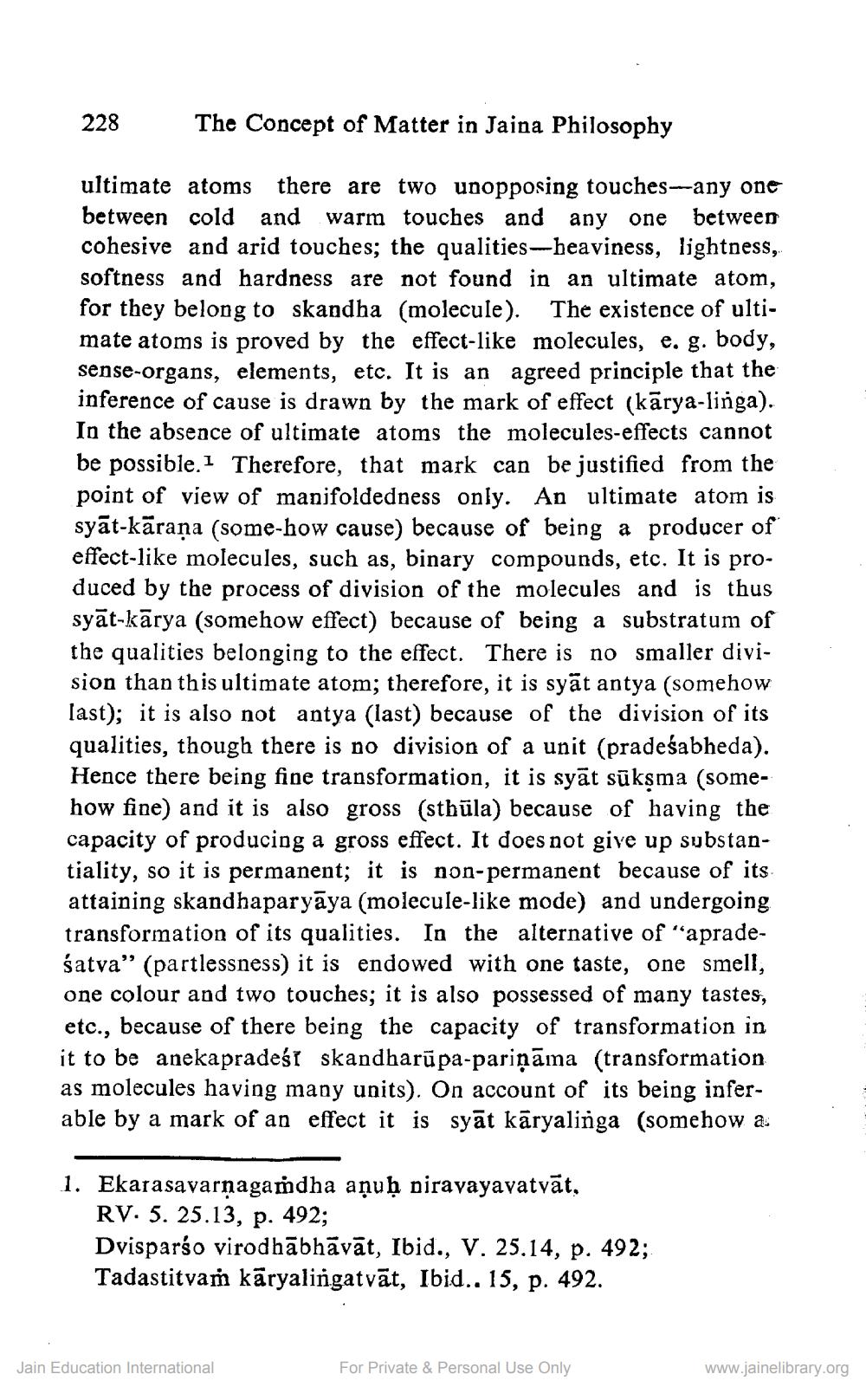________________
228
The Concept of Matter in Jaina Philosophy
ultimate atoms there are two unopposing touches-any one between cold and warm touches and any one between cohesive and arid touches; the qualities-heaviness, lightness, softness and hardness are not found in an ultimate atom, for they belong to skandha (molecule). The existence of ultimate atoms is proved by the effect-like molecules, e. g. body, sense-organs, elements, etc. It is an agreed principle that the inference of cause is drawn by the mark of effect (kārya-linga). In the absence of ultimate atoms the molecules-effects cannot be possible. Therefore, that mark can be justified from the point of view of manifoldedness only. An ultimate atom is syāt-kāraṇa (some-how cause) because of being a producer of effect-like molecules, such as, binary compounds, etc. It is produced by the process of division of the molecules and is thus syāt-kārya (somehow effect) because of being a substratum of the qualities belonging to the effect. There is no smaller division than this ultimate atom; therefore, it is syāt antya (somehow last); it is also not antya (last) because of the division of its qualities, though there is no division of a unit (pradeśabheda). Hence there being fine transformation, it is syāt sūkşma (somehow fine) and it is also gross (sthūla) because of having the capacity of producing a gross effect. It does not give up substantiality, so it is permanent; it is non-permanent because of its attaining skandhaparyāya (molecule-like mode) and undergoing transformation of its qualities. In the alternative of “apradeśatva" (partlessness) it is endowed with one taste, one smell, one colour and two touches; it is also possessed of many tastes, etc., because of there being the capacity of transformation in it to be anekapradest skandharūpa-pariņāma (transformation as molecules having many units). On account of its being inferable by a mark of an effect it is syāt kāryalinga (somehow as
1. Ekarasavarnagamdha aņuḥ piravayayatvāt,
RV. 5. 25.13, p. 492; Dvisparso virodhābhāvāt, Ibid., V. 25.14, p. 492; Tadastitvam kāryalingatvāt, Ibid., 15, p. 492.
Jain Education International
For Private & Personal Use Only
www.jainelibrary.org




